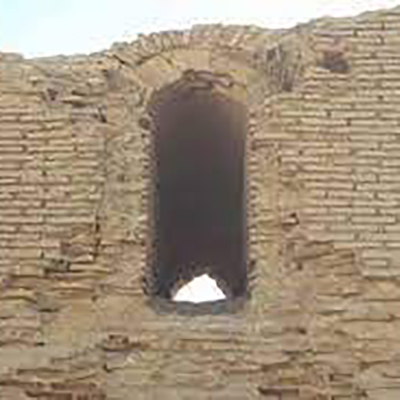Sites
Baqubah
Hassan Jafarzadeh
87 Views
Baqubah is the capital of Iraq’s Diyala Governorate. The Iran–Iraq War was symbolically initiated from this city when Saddam Hussain fired a tank shell from the local garrison. Baqubah is located approximately 50 km northeast of Baghdad, on the Diyala River. It borders Iran’s Kermanshah and Ilam provinces. In 2011, it had an estimated population of approximately 467,895 people, made up mostly of Sunni Arabs with a small Assyrian Christian minority. The Diyala River—one of the major tributaries feeding into the Tigris from the east—runs by the city. Known as the Sirwan River in Iran, it originates in the mountains of Kermanshah and Kurdistan.
Baqubah is located along the Baghdad–Erbil railway and the main Baghdad–Kermanshah highway.[1] Surrounded by palm groves, orchards, and fertile lands, the city has always played a key strategic role as Baghdad’s eastern gateway.[2]
Before the Iran-Iraq War, the 6th Armored Division of the Iraqi army was stationed in Baqubah’s “Saeh” garrison. On September 22, 1980, at 11:00 AM, Saddam Hussain fired a symbolic T-72 tank shell from the city’s garrison, marking the beginning of the Iran–Iraq War. As a result, Baqubah—serving as a key corridor between Baghdad and northern Iraq—became directly involved in the war.[3]
During the conflict, Baqubah’s military and strategic sites were repeatedly bombarded. In early 1984, in response to Iraqi air strikes, Iran targeted Baqubah’s military and industrial facilities.[4] The nearby Nasiriyah Air Base, with its heavily fortified air defenses, was also bombed several times.[5] Throughout the war, Baqubah was a major axis for Iraqi troop movements. On September 10, 1980, Iranian aircraft attacked the Baqubah–Khaneqin bridges, cutting off the Iraqi brigades stationed in Zeynel-Kash and Khan-Lili from their command.[6] Destroying the Kirkuk–Baqubah highway bridge was another early operation carried out by Iranian fighter jets.[7]
Iraq had fortified the region with defensive positions, including perimeter earthworks with troop bunkers, artillery platforms, direct-fire tank positions, and supply depots in the rear.[8] On July 11, 1987, Iraqi dissidents opposing the Baath regime attacked the governorate’s office in Baqubah and partially destroyed the building.[9]
Baqubah also became one of the main centers for the activities of the People’s Mojahedin Organization of Iran (Munafiqeen). The Iraqi army even had built a large base in the city, known as Camp Ashraf, to train Munafiqeen members.[10]
After the fall of Saddam’s regime, Baqubah retained its military role and became the headquarters of the 6th Division of the newly formed Iraqi army, which included four brigades.[11]
In 2014, after ISIS captured large parts of Iraq, Diyala Province became one of the group’s major centers of activity. Despite several large-scale attacks and the occupation of parts of the city, ISIS failed to fully take Baqubah.[12] As ISIS advanced into Baqubah, close to Iran’s border, Iranian forces went on alert, preparing for potential cross-border attacks.[13] With ISIS later facing defeats and retreating, the occupied areas around Baqubah were gradually liberated.[14]
[1] Hassani, Abdolrazzaq, Al-Araq, Qadiman wa Hadithan (Iraq, Past and Present), Saida, 1958, Pp. 9–11.
[2] Ibn Taqtaqi, Muhammad, Al-Fakhri (Al-Fakhri), Beirut: Dar Sader; Adams, R. M., Atraf Baghdad (Around Baghdad), trans. Saleh Ahmad Ali et al., Baghdad, 1984, p. 336.
[3] Pourdarab, Saeed, Taqvim Tarikh Defa Muqaddas (Chronology of the History of the Sacred Defense), Vol. 2: Qoresh-e Topha (The Roar of Cannons), Tehran: Markaz Asnad Enqelab Eslami, 1384, p. 15; Faslname-ye Barrasi-haye Nezami, Year 3, No. 11, p. 14.
[4] Jang-e Iran va Araq az Negah-e Matboat-e Jahan (Iran-Iraq War from the Perspective of World Press), Vol. 15: Tahavvol dar Sahneh-ye Jang (Transformation on the Battlefield), Tehran: Entesharat-e Shakib, 1388, p. 134.
[5] Paygah-e Interneti-ye Military, Bombaran-e Paygah-e Havaei-ye Nasiriyeh (Bombing of Nasiriyah Air Base), 20/1/1387: http://www.military.ir/
[6] Tarikh-e Nabardhaye Havaei-ye Defa Muqaddas (History of Aerial Battles of the Sacred Defense), Vol. 1, Tehran: Markaz Entesharat-e Rahbordi, 1393, p. 286.
[7] Pourdarab, Saeed, Ibid., p. 236.
[8] Cordesman, Anthony, and Abraham Wagner, Darshaye Jang-e Modarn (Lessons of Modern War), Vol. 1: Jang-e Iran va Araq (Iran-Iraq War), trans. Hussain Yekta, Tehran: Marzoboom, 1390, p. 351.
[9] Lotfollahzadgan, Ali-Reza, Roozshomar-e Jang-e Iran va Araq (Chronology of the Iran-Iraq War), book 49: Tasvib-e Qatname-ye 598, Zamineh-haye Siyasi va Nezami (Adoption of Resolution 598, Political and Military Contexts), Tehran: Markaz-e Motaleat va Tahqiqat-e Jang, 1387, p. 557.
[10] Yazdanfam, Mahmoud, Roozshomar-e Jang-e Iran va Araq (Chronology of the Iran-Iraq War), book 50: Eskort-e Naftkesh-ha, Dekhalat-e Mostaqim-e Amrika dar Jang (Tanker Escorts, Direct U.S. Involvement in the War), Tehran: Markaz-e Motaleat va Tahghighat-e Jang, 1378, p. 636.
[11] Nami, Muhammad-Hassan, and Muhammadpour, Ali, Joghrafiya-ye Keshvar-e Araq ba Taakid bar Masael-e Geopolitik (Geography of Iraq with Emphasis on Geopolitical Issues), Tehran: Sazman-e Joghrafiyaei-ye Niroohaye Mosallah, 1387, p. 467.
[12] Roozname-ye Donya-ye Eqtesad (Donya-ye Eqtesad Newspaper), No. 3226, 29 Khordad 1393.
[13] Bashgah-e Khabarnegaran-e Javan (Bashgah-e Khabarnegaran-e Javan News Agency), news code 7173997, 25 Azar 1398.
[14] Khabargozari-ye Jomhuri-ye Eslami (Jomhuri-ye Eslami News Agency), Azadsazi-ye Baqubah az Dast-e Terroristha (Liberation of Baqubah from Terrorists), 9/4/1393.





